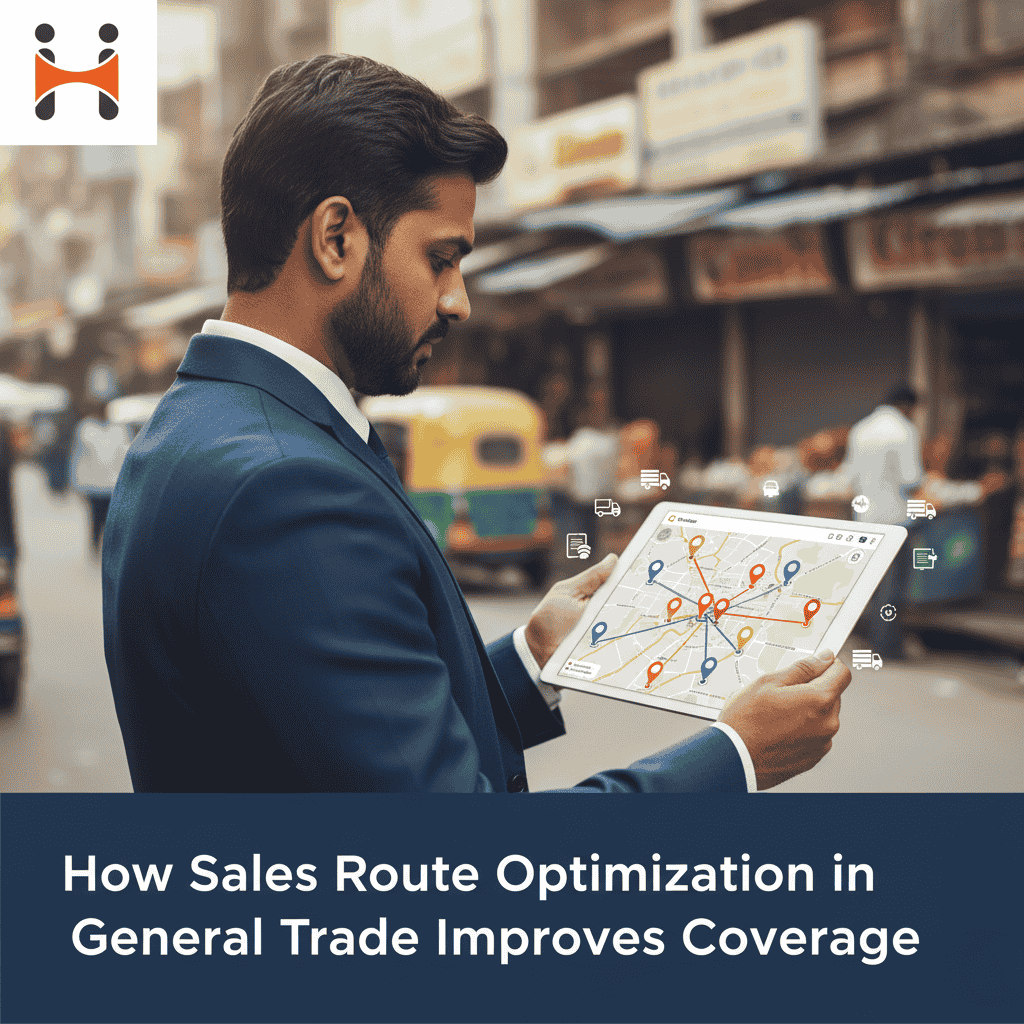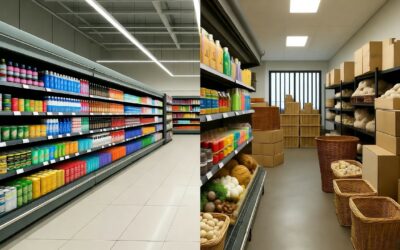How Sales Route Optimization Improves Coverage in General Trade Network

General Trade is still the heart of FMCG distribution in India. Even with modern trade and online sales growing fast, kirana stores and local retailers remain the main source of daily sales. Managing this network is complex. Thousands of small stores spread across different areas need attention, and keeping track of them is not easy.
Field sales teams spend hours on the road. Many follow manual beat plans that rarely match what happens on the ground. Routes are often unplanned or outdated. As a result, some outlets get skipped, travel time increases, and productivity drops.
Sales route optimization solves this problem. It helps teams plan smarter routes, save time, and cover more outlets with less effort. It is not just about finding the shortest path. It is about creating a daily plan that uses time and resources wisely.
What Route Optimization Means in General Trade?
Route optimization is the process of finding the best way for field sales teams to visit outlets. It uses data like location, visit frequency, and sales history to build a practical route for the day.
In General Trade, this is important because sales reps often handle hundreds of outlets. When the route is planned manually, visits are uneven. Some stores get too many visits, while others get ignored.
A good route plan ensures that every store gets attention based on its value and sales potential. It reduces unnecessary travel and helps teams focus on high-priority outlets.
Why Route Optimization Matters?
Better Outlet Coverage
A company grows when its products reach more stores. Route optimization makes that possible. It helps teams plan their visits based on outlet importance. Big stores can be visited more often while smaller ones are handled less frequently. This keeps the network active without putting extra pressure on the team.
With data and maps, managers can also see which areas are not being visited. This helps them plan new routes and expand coverage easily.
Lower Travel Time and Costs
When routes are planned poorly, sales reps spend more time on the road than with retailers. Fuel costs rise, and productivity drops. With route optimization, travel time reduces. Teams visit more outlets in less time. Fuel expenses go down, and stress levels reduce. Many companies that use route planning tools have reported travel cost savings of more than 20 percent.
Real-Time Tracking and Visibility
Managers often struggle to know where their sales teams are during the day. Manual reporting is unreliable. With route tracking, managers can see real-time movements. Every visit is recorded automatically through GPS and check-ins. This builds trust because performance is based on data, not assumptions.
Higher Sales Productivity
When sales reps spend less time traveling, they can spend more time talking to retailers. They can discuss stock, take better orders, and strengthen relationships. This directly improves order volume and product availability in stores.
Smarter Territory Planning
Markets change often. New outlets open, old ones close, and boundaries shift. Route optimization software helps managers adjust routes quickly. They can reassign outlets and balance workloads so that every area is covered evenly.
A Real Example
One FMCG company we worked with had more than 120 sales reps handling about 10,000 outlets across two states. The team used static beat plans made on Excel. These plans rarely changed. Many outlets were left out, and travel routes were inefficient.
After switching to route optimization software, the system analyzed outlet data and created optimized routes for each rep. Within three months, average outlet visits per rep rose by 22 percent. Travel distance dropped by 18 percent. Reporting became more accurate.
Sales reps said their workdays became easier to manage. Managers had better visibility. Overall sales went up by 9 percent in the first quarter.
What Route Optimization Tools Offer?
Modern route optimization systems combine GPS, sales data, and field reports in one platform. This gives both reps and managers a clear view of daily activities.
Some useful features include
- Smart beat planning that creates daily or weekly routes based on outlet data
- Live GPS tracking to monitor movements and check-ins
- Route adjustment when there are new orders or last-minute changes
- Territory maps to identify missed areas
- Reports that measure time spent and outlet coverage
- Integration with CRM and DMS tools for smoother data flow
These features reduce manual work and make sales planning more efficient. Reps spend less time guessing and more time selling.
Benefits for Sales Teams and Managers
Predictable Schedules
Reps start their day with a clear plan. They know where to go and when to visit. This makes their day less stressful and more structured.
Informed Decisions
Managers can see where time is being spent and how routes perform. They can use this data to plan better coverage or adjust workloads.
Less Supervision Effort
Automated tracking removes the need for constant follow-ups. Supervisors can focus on training and coaching instead of checking reports.
Stronger Retailer Relationships
Retailers appreciate regular visits and timely follow-ups. When beat plans are consistent, store owners gain trust in the company. This leads to long-term partnerships.
Easier Scaling
When operations grow, route optimization software adjusts quickly. Whether the company adds ten or a hundred new reps, the system keeps routes consistent and efficient.
Common Mistakes to Avoid
While working with FMCG companies, we have seen a few common errors that reduce the value of route optimization.
- Making routes too complex. Simple routes work better than over-engineered ones.
- Ignoring feedback from sales reps. They often know local conditions better than digital maps.
- Not updating outlet data. Old or incorrect data leads to poor route plans.
- Treating optimization as a one-time setup. Routes need regular review as markets evolve.
Avoiding these mistakes helps keep the system reliable and useful.
Technology is Changing How General Trade Works
The FMCG market is more competitive than ever. Companies that still depend on paper-based planning are at a disadvantage. Digital tools bring structure and visibility that manual systems can’t match.
Modern route optimization uses GPS and AI to plan routes and track sales activity. It turns raw data into clear insights. Managers can see which outlets are covered, which ones are missed, and how efficiently the team is working.
When connected with employee tracking, it becomes even more powerful. Managers can view routes, visit timing, and sales performance in one dashboard. It gives control without constant supervision.
What’s Next?
General Trade will keep changing as technology becomes more common. Route optimization will move from being a useful feature to an essential part of daily sales planning.
Future systems may use predictive analytics to plan routes based on weather, traffic, or seasonal demand. They may even recommend new outlets to visit based on sales trends.
For FMCG companies, this means better planning and faster decision-making. Every visit and every kilometer will have a purpose.
At our company, we help businesses set up smart route optimization systems that make their field operations more efficient. With real-time tracking, performance reports, and smart planning, companies gain better control over their sales network.
If your goal is to improve coverage and reduce travel time, route optimization is the next step. Contact us to get started.


